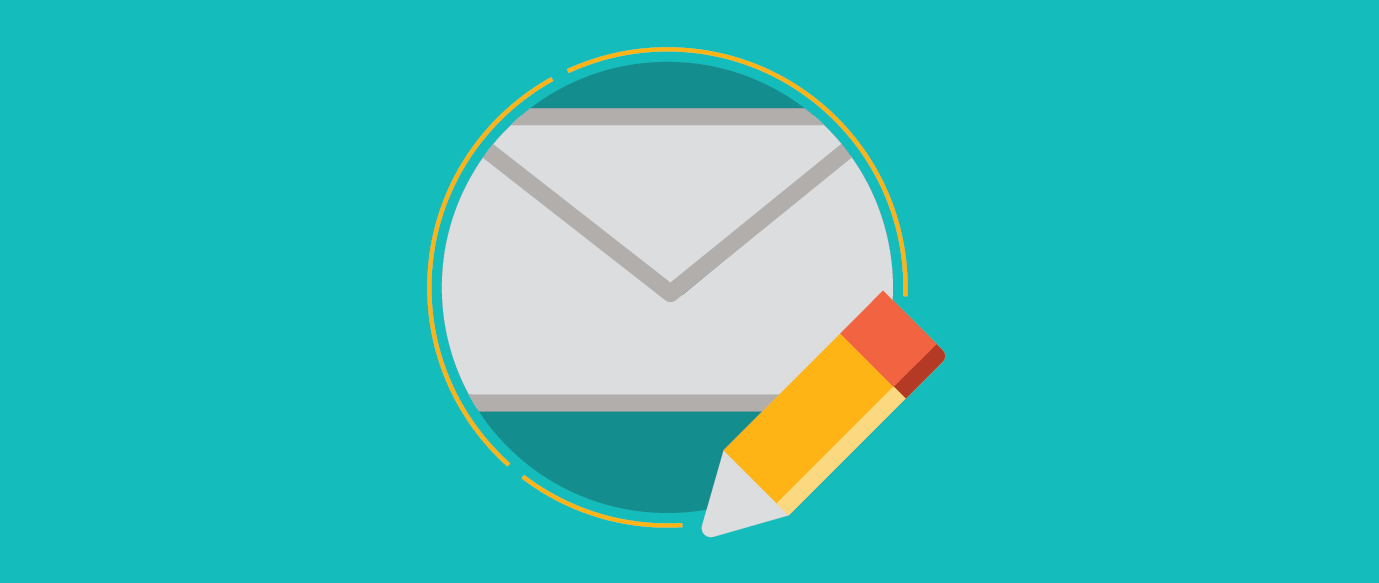
Your confirmation and welcome email are your first impression. They set the tone for your relationship with subscribers and can improve engagement for future emails.
But to make them successful, there are two things you need to do: create an automated email series and write compelling confirmation and welcome emails.
By automating them, you can connect with your subscribers immediately and automatically. (Plus, save your time!) And with the correct writing strategies, your emails will be compelling and sound human, instead of robotic.
Ready to craft engaging confirmation and welcome emails? In this post, you’ll learn exactly how to write them.
Let’s start off with the very first email your customer will receive from you - the confirmation email.
What is a Confirmation Email?
A confirmation email is an email triggered based on a specific customer action such as placing an order, subscribing to an email list, or registering for an event.
Types of Confirmation Emails
There are four main types of email confirmation messages:
- Order confirmation email - confirms the transaction of a product or service
- Booking confirmation email - informs customer that hotel, flight, and other travel arrangements have been made
- Registration confirmation email - provides confirmation that customer is registered for upcoming event
- Subscription confirmation email - also called an opt-in email, requires customers to confirm email address to complete opt-in process
Why You Should use a Confirmed Opt-in Email
How to write a confirmation email depends on the type - order, booking, registration, or subscription. Confirmation emails (or confirmed opt-in) contain a link or button that your subscribers must click to confirm they want to be subscribed to your list.
It is good email marketing practice to send a confirmed opt-in (COI) email because:
- It prevents mistyped and fake email addresses from cluttering up your list
- It improves deliverability. When you are using a COI email, all subscribers are opting into your list twice. This is called double opt-in, and it can often lead to more emails reaching your subscribers’ inboxes.
- It can lower spam complaints, and this often results in higher deliverability as well.
What to Include in Your Automated Confirmation Email
1 - Confirm your customer's request
Whether it’s for a booking, reservation, order, or subscription, you need to confirm their transaction. This starts establishing confidence and trust with your brand and gives customers peace of mind that their request was processed.
2 - Verification of email address
It’s important to have customers verify their email address. It’s essentially having the customer say “yes, I want to receive email from you,” twice. This helps you improve your delivery rate and get higher email engagement.
Confirmation Email Examples
Chipotle’s confirmed opt-in email explains why subscribers are receiving this message and exactly what they should do.
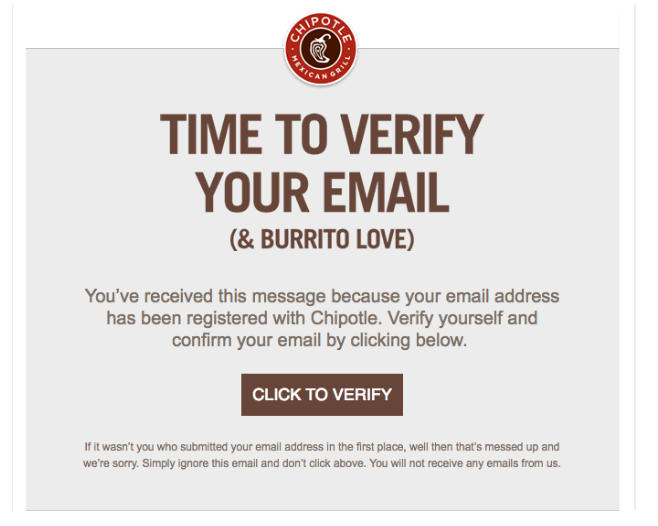
In the confirmed opt-in email for our AWeber Blog Newsletter below, we tell subscribers about the benefits of being on our list (free blog posts, courses and ebooks!). This helps to improve the conversion rate of our confirmed opt-in email.
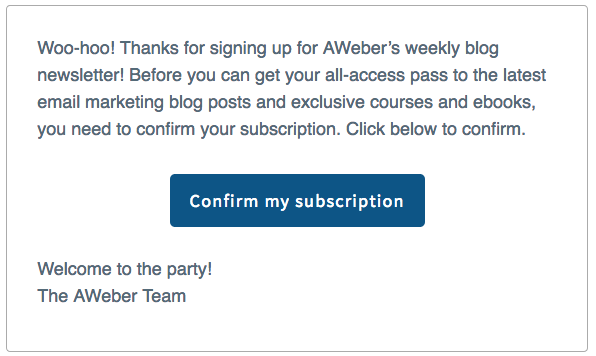
Once subscribers confirmed their email, it’s time to officially welcome them to your email list.
How to Write a Great Welcome Email
First lets understand what a welcome email is and why it is necessary.
What is a Welcome Email
A welcome email is often the first (or second after a confirmation email) a customer receives. This is the most important email you will ever send your customer because it is the first impression which can make or break your relationship.
Why you NEED to have a welcome email
Welcome emails could possibly be the most highly engaged email that you send a customer. Studies show welcome emails see open rates 4 times higher and click-through rates 5 times higher than other emails.

The best welcome emails have such great results because they arrive in your subscriber’s inbox at the peak of their interest – when they’ve just signed up for your email list. And often, email marketing welcome emails contain the incentives businesses promise on their sign up forms. So subscribers are eagerly awaiting those emails and their freebies.
At other times, subscribers are excited about signing up for a newsletter, and the welcome email gives them a sneak peek into what they’ll be receiving.
Whatever the scenario is, the best welcome emails sequences consistently perform well and can do a lot towards improving your email marketing strategy. For example, a great welcome email will:
- Help to improve your email deliverability
- Get more emails to subscribers’ primary inboxes
- Boost open rates and click-through rates for future emails
- Decrease spam complaints and unsubscribes
- Help you sell your product or service
And more.
(Your welcome email is just the beginning. Learn how to craft perfect emails all the time with our FREE What to Write course.)
How to Write a Welcome Email
An effective welcome email should include these key components:
1 - Make a great first impression
Introduce your brand and welcome your subscribers. Allow your customers to start becoming familiar with you. This email will help set the tone for all future emails.
Don't try to sell anything in your welcome email. It’s way too early in your relationship with this new subscriber. That’d be like asking someone to marry you on the first date!
However, the welcome email is a good opportunity to begin establishing a relationship that can lead to sales later on.
2 - Thank your subscribers
It’s a privilege to get a new customer or subscriber, make sure you show that appreciation and welcome them to your brand.
3 - Set expectations
You can set expectations by explaining how frequently subscribers will receive emails from you and by walking them through the kind of content they’ll receive.
If you tell subscribers up front that you’ll be emailing them daily, for example, they’ll be less likely to mark your emails as spam, because they’ll be expecting daily emails.
Additionally, when you inform subscribers of the kind of content they’ll get from you and you stick to those guidelines, subscribers may be less likely to mark your emails as spam or unsubscribe, because they’re aware of the kind of content you send.
4 - Introduce customers to your brand
Not everyone who signs up to your email list will be familiar with your brand. As a result, include information about yourself and your business. Let customers know how to get in touch with you. Do you offer 24/7 customer service? Can customers reach you by email, phone, chat?
5 - Ask subscribers to safelist (formerly known as whitelist) you
Earlier in this post, I mentioned that welcome emails can increase deliverability and help more of your emails reach the inbox.
To make this happen, ask subscribers to safelist you in the copy of your welcome email.
Safelisting is when a subscriber adds your sender name to their email contacts. When an email provider such as Gmail recognizes that you’re in the subscriber’s contacts, they’ll be sure to deliver your email.
You can ask someone to safelist you by providing instructions for how to do so.
Add your own twist
Be human, your welcome email shouldn’t sound like it came from a robot. Your subscribers want to hear from you. Set the tone, and let your personality shine through.
Remember, this is your first impression. Make a splash right from the get-go. If you do this right, your readers will eventually be able to recognize your voice in every stage even if your logo and brand colors go missing from your emails. And they’ll be even more excited to open your next email.
Welcome Email Examples
Here’s an example from Further which asks customers to safelist their subscribers early in the email:
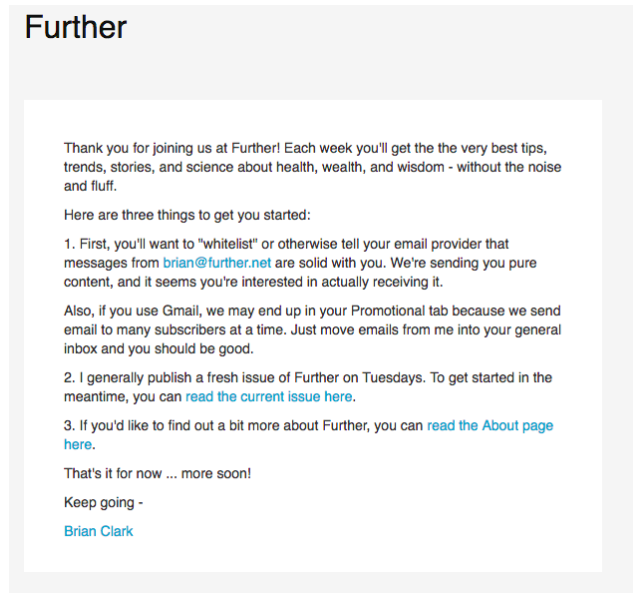
Take a look at how Farnam Street welcome email sample below, they explain that subscribers will receive an email each Sunday with the best brain food from the week:

In a section of her welcome email to new clients, Jill Angie of Not Your Average Runner introduces herself through a short and compelling story.
This is a short story — but it’s compelling! Jill uses a conversational tone and is super likeable. You can do this too in your own emails.
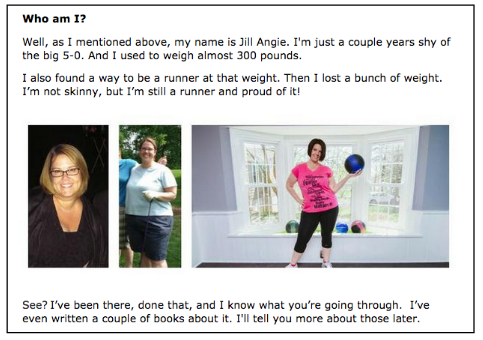
Nomadic Matt, a travel blogger, builds excitement in his welcome email by telling subscribers they’ll get, “amazing tips, tricks, and deals sent to you so you can travel more on less.” He then allows them to choose the type of travel content they want to receive from him by having them select the country they want to travel to next.
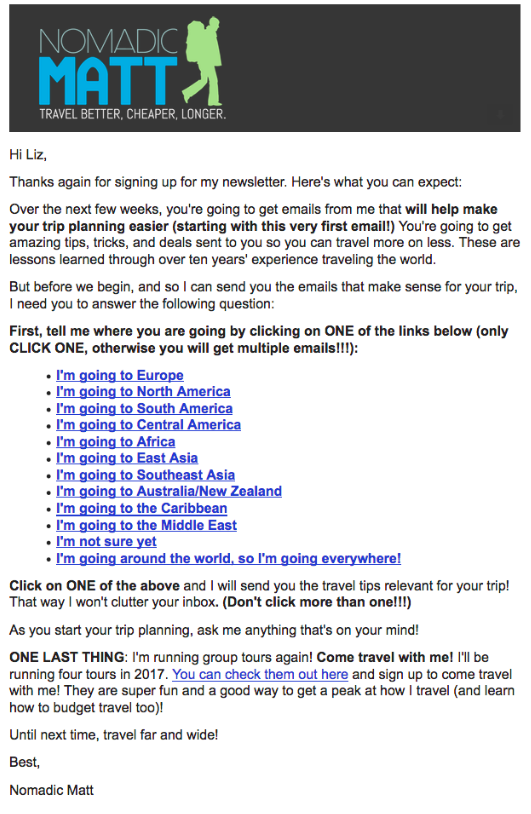
Optimize with Email Automation.
These 2 emails are the first automated messages you should send to subscribers. But they’re just the tip of the iceberg. You can leverage the power of email automation to create a marketing machine that’ll promote your product and increase your revenue. And the best part? This machine will run on autopilot, making money for you while you do other things.
Get started with email automation! Create your FREE account with AWeber today, and change the way you send emails forever.
Help writing confirmation and welcome emails
Still need a little help figuring out how to write your emails. We’ve got you covered with our Free What to Write Guide.
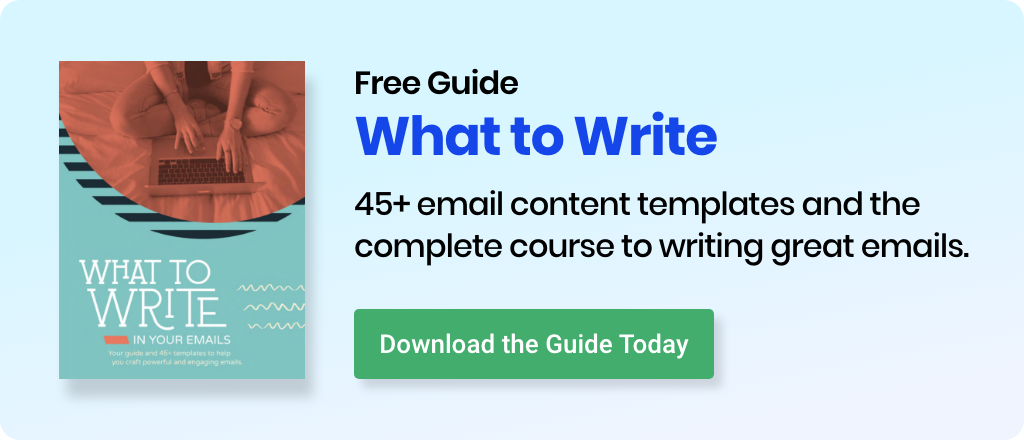
Plus AWeber customers have confirmation email and welcome email templates that you can use, saving your even more time and effort.
What comes after your confirmation and welcome emails?
Once you have your confirmation and welcome emails series set, it’s time to start thinking about the rest of your sequence. How many emails in your welcome series should be determined by testing. There really is no right or wrong answer.
How to Write an Engaging Welcome Email Infographic
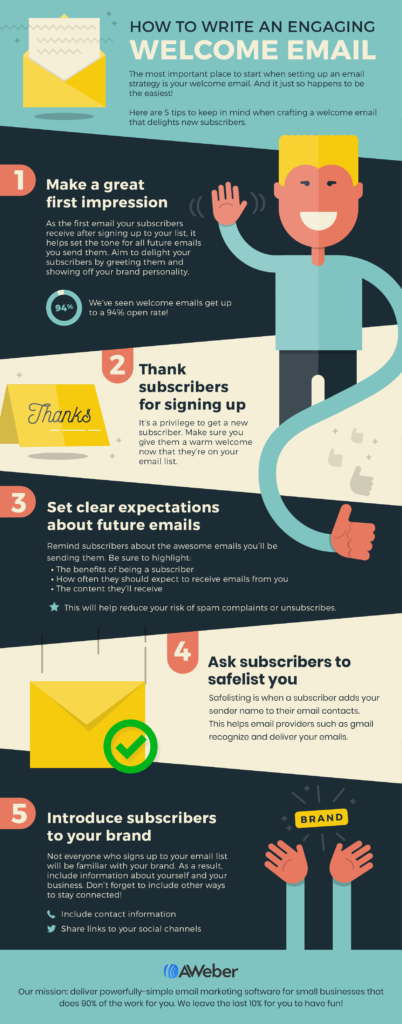
The post Writing Confirmation and Welcome Emails People Love appeared first on AWeber.
from AWeber https://ift.tt/1P5d272
via IFTTT
No comments:
Post a Comment